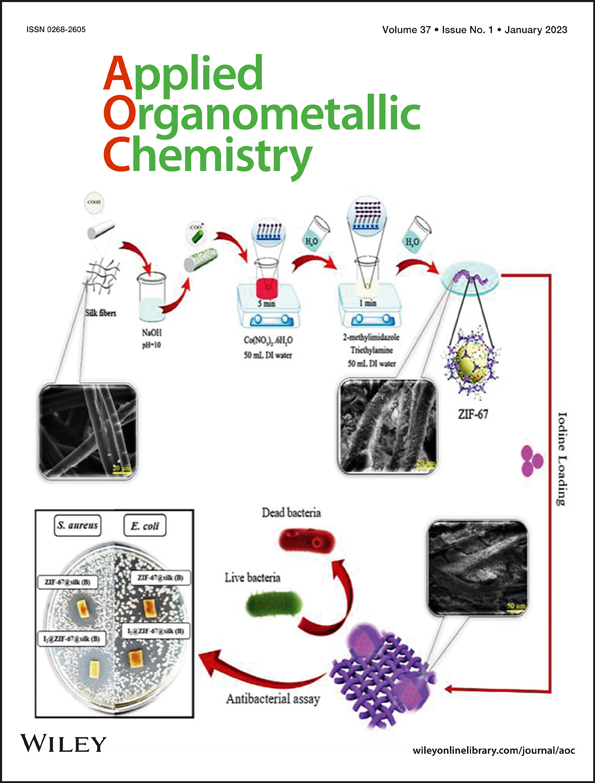Loading of ZIF-67 on silk with sustained release of iodine as biocompatible antibacterial fibers
Funding information: University of Tehran, Grant/Award Number: 01/1/389845
Abstract
Antibacterial fibers have great potential in numerous applications, including bandages, surgical robes, and surgical sutures, and play a significant role in our everyday lives. Here, zeolitic imidazolate framework-67 was synthesized using a green method on silk fibers through a layer-by-layer process under ultrasonic irradiation (ZIF-67@silk [U]) and without ultrasonic irradiation (ZIF-67@silk [B]). Then, iodine was loaded on ZIF-67@silk samples and were assessed as antibacterial fibers with iodine release. Four samples of ZIF-67@silk and I2@ZIF-67@silk were characterized by FT-IR, PXRD, FE-SEM, TGA, BET, and UV–Vis spectroscopy. Finally, antibacterial activity of ZIF-67@silk (B and U) and I2@ZIF-67@silk (B and U) on Staphylococcus aureus as Gram-positive bacteria and Escherichia coli as Gram-negative bacteria was investigated. In addition to ZIF-67@silk samples, iodine-loaded samples showed excellent antimicrobial facility.
Open Research
DATA AVAILABILITY STATEMENT
The data that support the findings of this study are available in the supporting information of this article.




